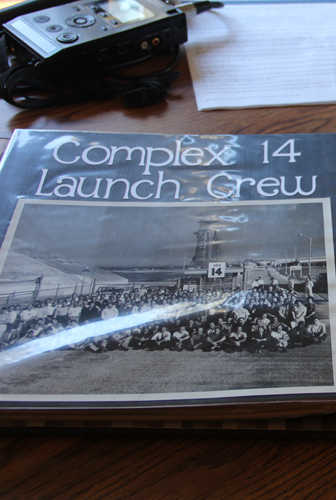The name of astronaut John Glen, the first man to orbit the earth will never be forgotten. The team of rocket pioneers that put him there and returned him safely to earth however were the un-sung heroes of the U.S. Mercury Space program. The rocket design engineers were known as the “Tiger Team.” Dave Stein was in charge of the propulsion system and today at age 82 lives with his wife Jane in Soldotna. Three years ago during the 50th Anniversary commemoration of the Glen launch the Peninsula Clarion coined Stein “Rocket man” in a front page article because he helped build the rocket that sent the first American around planet earth. Today that paper is the front page of the scrape book Stein created to be passed to his daughter Kathy Gensel and family.
The United States got a late and precarious start into the space race after the U.S.S.R. successfully launched their first Sputnik satellite into orbit. The fear of the Soviets lead in the space race and the potential military advantage during the cold war forced new priority into the U.S. space program and public disappointment when America’s first attempts to launch a satellite failed to get off the ground. By the time the Mercury manned space flight program came along we were still relying on rockets that were designed to launch a nuclear warhead not a human being said Stein in an interview with the Dispatch, “We spent maybe three years turning that ICBM vehicle into something that was made to put a man on top of. And yes there was a lot of trepidation the day of that launch. The Atlas had had failures as it was being developed so there were systems incorporated into the vehicle which were safety oriented, nevertheless it took a lot of courage to put yourself on top of that rocket for the first time and I’ve always admired John Glen as it took a lot of guts to climb on top of that missile,” said Stein. “I use to say we were nothing more than some high priced plumbers, because the Atlas was a lot of plumbing, pipes, tubes and big ducts that looked just like a plumbing project. But we were very aware that we were putting a man aboard this bunch of pipes and tubes and did a lot to make sure that guy on top was going be safe. We were nervous but we were all very confident the day of the launch that the systems would do what we had designed them to do. We had tested them, but we were pioneers going where no man had been before,” he said.
Stein today spends most of his time tracing his genealogies accompanied by his faithful companion Daisy at his Soldotna home. Asked about the future of manned space flight Dave replied, “I think we’ll return to it, but I don’t know when. Primarily now it’s the private commercial industry they are relying on to do things, NASA is getting very little funding, but I did hear the other day that NASA is testing a huge solid rocket that is supposedly being designed to take people to Mars, but I don’t know when that’s going to happen and I really wouldn’t want to be a part of it. Rocket science isn’t at all what it used to be when I came out of Purdue University no one even knew what a rocket engine was all about, but we learned, made a lot of it up as went along and learned by the seat of our pants,” said Stein.

